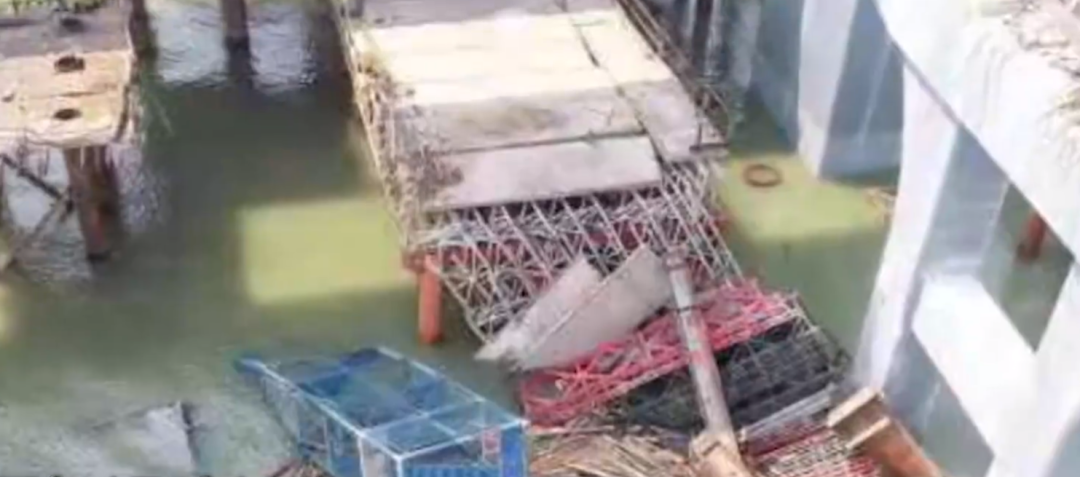3.

Insulation telemetry shall be done before cable laying, and 1kV insulation megger shall be used for low voltage.
13.2.4 signboards shall be set at the head, end and branches of cables, and marker posts shall be set for directly buried cables.
14.
The insulation resistance between telemetry lines and to the ground shall not be less than 10m Ω, and records shall be made.
13.
For the grounding wire, pay attention to the special grounding hole on the trunking tray, and the minimum allowable cross-sectional area of the grounding wire shall not be less than 4mm ²; Remove the insulating layer under the grounding bolt before connection; The two ends of the connecting plate between galvanized bridges shall not cross the grounding wire, but the two ends of the connecting plate shall not be less than 2 connecting and fixing bolts with anti loose nuts or anti loose washers.
The connection between the metal ladder, tray or slot box body shall be firm and reliable, and the connection with the protective conductor shall comply with the following provisions: 1 When the total length of ladder, tray and slot box is not more than 30m, at least 2 places shall be reliably connected with the protective conductor; When the total length is more than 30m, a connection point shall be added every 20m ~ 30m, and the starting end and ending end shall be reliably grounded.
If there is any infringement, please contact to delete!) long press the QR code to follow us 
4.
Trunking The bottom plate of the bridge shall be fixed with the cross arm of the support and hanger with metal bolts (≤ 200mm, fixed with one bolt; > 200mm, fixed with two bolts at 1 / 4 of the side).
Cable access to cable trench, electrical shaft and buildings, distribution (control) fire prevention or sealing measures shall be taken at cabinets, platforms, boxes and pipe orifices.
Key points of laying process in cable tray first take a look at the requirements of the strong article of code for acceptance of construction quality of Building Electrical Engineering (gb50303): 13.1 2 cable laying shall be free from defects such as twisting, flattening of armor, breakage of protective layer and serious scratch on the surface.

The minimum bending radius at the cable turning shall comply with table 11.1 2.
The key points of the installation process of the first-line slot bridge first look at the requirements of the strong article of the code for acceptance of construction quality of Building Electrical Engineering (gb50303): 11.1 1.
2.
A group of hangers shall be set on both sides of the turn, and the two groups of hangers shall be symmetrically arranged with a spacing of no more than 1.5m, otherwise a group of hangers shall be added in the middle of the turn.
10) when the bridge crosses the wall and floor, it shall be blocked with non combustible materials; when crossing the fire compartment, the bridge must be blocked with fire prevention.
7.
3.
Cable tray and trunking shall be accurately set out, processed and installed according to the special angle of concrete.
Cables shall be laid in order, and fixed points shall be set at both ends, both sides of the turn and every 5 ~ 10m for horizontally laid cables.
There shall be no crossing, and the bend shall be subject to the allowable bending radius of the cable with the maximum cross-sectional area.
Based on the on-site example of CSCEC high-quality project, this paper shares 17 key points of construction technology for your reference.
The cable shall be along the bridge or During tray laying, the cables shall be laid in a single layer and arranged neatly.
If suspender support is used, the diameter of suspender shall not be less than 8mm, and fixed support shall be set at lintel.
Cables laid obliquely more than 45 ° in ladders, trays or trough boxes shall be fixed every 2m, and fixed points shall be set at both ends, both sides of turns and every 5m ~ 10m for cables laid horizontally.
17.
8.
As an important part of the electromechanical installation project, the construction of bridge and cable directly affects the overall quality of the project.
6.
II.
1.
The ratio of the total cross-sectional area of cables to the cross-sectional area of trays and ladders shall not be greater than 40% for power cables and 50% for control cables.
2.
12.
3.
A group of hangers shall be set on both sides of the turn, and the two groups of hangers shall be symmetrically arranged with a spacing of no more than 1.5m, otherwise a group of hangers shall be added in the middle of the turn; The distance between the top tray and the floor slab shall not be less than 150mm, and the spacing between the upper and lower trays shall not be less than 150mm.
9.
5.
Cables laid vertically or at an inclination greater than 45 ° in cable trench or electrical shaft shall be fixed on each support.
8.
15.
In coordination with civil engineering, holes shall be reserved in advance for bridge crossing walls, floors and other parts.
16.
At the same time, it is considered to select waterproof cover plate, and the height of the outdoor bridge and trunking shall be higher than that of the indoor Outdoor to prevent rainwater from flowing into the room.
(source: integrated on the Internet, the picture and copyright belong to the original author.
13.2.
The length of steel cable tray in straight section exceeds 30m, and the length of aluminum alloy or FRP cable tray exceeds 15m, with expansion joints; Compensation device shall be set at the deformation joint where the cable tray crosses the building.
11) the installation height of the outdoor installed bridge shall not be lower than the height of snow and ponding.
The total length of metal cable tray and its support shall not be less than 2, which shall be connected with the grounding trunk line; Both ends of the bridge shall be reliably connected with the shell of the distribution cabinet or the ground wire row.
The two ends of the connecting plate between the non galvanized ladder, tray and slot box body shall be bridged with the protective connecting conductor, and the cross-sectional area of the protective connecting conductor shall meet the design requirements.
Both ends of the connecting plate between non galvanized cable trays shall be connected with copper core grounding wire.
When the protective connecting conductor is not bridged between the galvanized ladder, tray and slot box body, each end of the connecting plate shall not be less than 2 connecting and fixing bolts with anti loose nuts or anti loose washers.
Cable laying shall comply with the following provisions: 1 The cables shall be laid and arranged in a straight and orderly manner with less crossing.
4.
For cables laid in the vertical bridge, one shall be fixed for each laying, and the spacing of fixed points shall not be greater than the following values: the spacing of fixed points of all plastic cables and control cables shall not be greater than 1m, and that of other power cables shall not be greater than 1.5m.
Cable signs shall be hung at both ends, corners and intersections of cables laid along the cable tray, and the cable number, specification, voltage grade and starting position shall be indicated on the signs.
2.
2.
The distance between bridge hangers in straight section is 1.5m ~ 2m.



